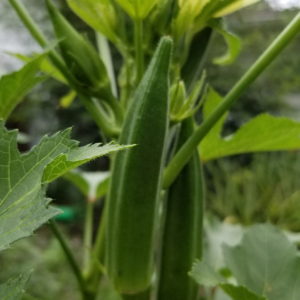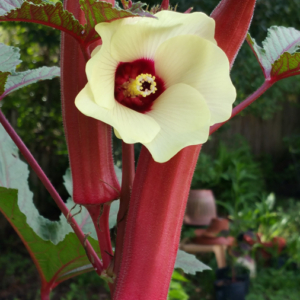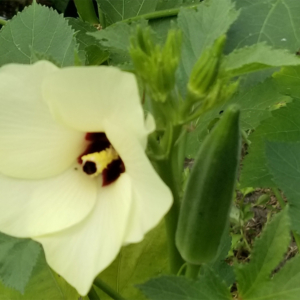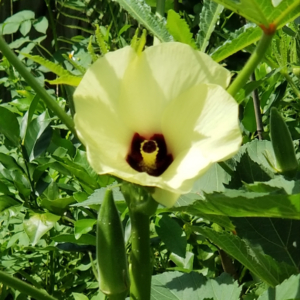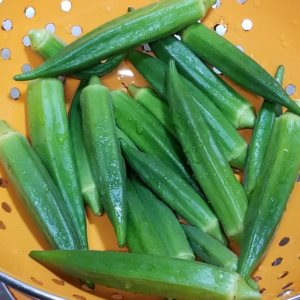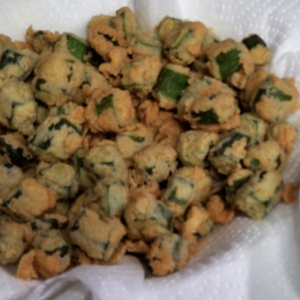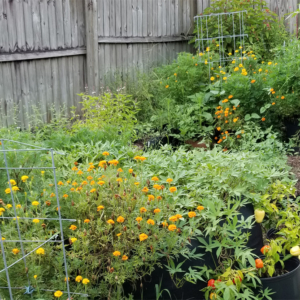Whether pickled, fried, added to jambalaya or gumbo, sautéed with tomatoes or steamed over a pot of blackeyed peas, okra has been revered by generations of Floridians. Okra is also an excellent choice for the summer vegetable garden in Florida. Unfortunately, there are a few problems that crop up fairly often. Fortunately, there are also some simple solutions that will benefit the entire garden.
Okra Grows Too Tall
Some varieties can grow quite large. Seven to eight feet tall is not unusual. If space is a consideration try Jambalaya, Cajun Jewel or Burmese. An added bonus, these shorter varieties flower and fruit quicker than the larger types. I have had excellent results growing Jambalaya in half-barrel planters, growing three plants per barrel. They grew between 4 and 5 feet, which made the ripe okra the perfect height to pick.
Remember to pick often and pick young for the most tender okra. This will also encourage more fruiting.
Okra
Oh No, Aphids!
Aphids can be destructive when present in large numbers. This was my situation the first summer after we moved to this house. I turned on the hose and let a hard spray of water run upward through the plants. This knocked down the majority of aphids. I made absolutely no effort to eradicate them all, since I wanted to build up a diversity of beneficial insects. Ladybugs won’t hang around if there are no aphids to eat. Since then, as the garden became more diverse, aphids haven’t been a problem. Oh yes, aphids are still around. Just not in the numbers that cause concern.
Like a hungry pack of teenagers when the pizza delivery arrives, the larval stage of ladybug seems to have a bottomless apatite. They can eat a lot of aphids. For this reason the gardener should learn to recognize the various stages of ladybug development. See Ladybug Life Cycle.
Here is a more detailed article about the different types of Ladybugs in Florida.
Root-Knot Nematodes
Root-Knot Nematodes can damage the roots of many vegetables, including okra. In large enough numbers these microscopic roundworms can damage a plant’s roots to the point that they cannot take up enough water and nutrients for proper development.
Nematodes prefer sandy soils, and we know something about that in Florida. What can be done? Regularly adding organic matter to the garden will certainly make a difference.
Crop rotation is a good idea, whether nematodes are a problem or not. Members of the cabbage family do not appeal to nematodes, so vegetables like kale, turnip, mustard and radish would make an excellent cool weather rotation.
For many years I have sown Park Seed’s Golden Guardian Marigolds whenever my garden needs a rest.
Many people suggest soil-solarization as an environmentally friendly method to sterilize the soil. By ‘environmentally friendly’, I suppose they mean ‘at least you’re not dumping chemicals on the soil’. That’s good, of course, but to me this is a bit too much like throwing the baby out with the bathwater. I would rather not bake all the beneficial microbes in my soil.
By following good gardening practices, whether problems exist or not, practices such as adding organic matter, crop rotation, encouraging beneficial insects, problems can often be avoided.
If it’s good for okra, it’s probably good for the entire garden.
